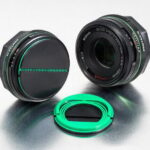When you think of the Western film genre, one of the first images that comes to mind is Clint Eastwood standing tall, wearing his iconic poncho, squinting against the harsh desert sun. That simple garment has become a symbol of both Eastwood’s tough, no-nonsense persona and the gritty, action-packed world of the spaghetti westerns that catapulted him to global stardom. But what is the story behind this famous poncho? How did it become such an integral part of Clint Eastwood’s legendary look, and what makes it so memorable even today?
Let’s dive into the fascinating history of Clint Eastwood’s poncho and why it remains a timeless symbol in both film and fashion.
The Birth of the Iconic Poncho Look
Enter the Spaghetti Western
Clint Eastwood first donned his famous poncho in 1964 for the film A Fistful of Dollars, directed by Sergio Leone. This movie was part of the emerging spaghetti western genre—so named because many of these films were produced and directed by Italians. Before this film, Eastwood was best known for his role as Rowdy Yates on the TV series Rawhide, but his transition to the gritty, nameless antihero of Leone’s films would forever alter his career.
Eastwood’s poncho made its debut as part of his character’s minimalist wardrobe, which included the now-famed brown hat, a pair of boots, and a simple yet rugged poncho. It was a look that perfectly captured the essence of Leone’s Westerns: stripped-down, raw, and tough as nails.
The Man With No Name
The character Eastwood portrayed in A Fistful of Dollars, later known as The Man with No Name, became one of the most iconic figures in cinema history. His silent, stoic demeanor, combined with the unmistakable poncho, gave the character an air of mystery and menace. Throughout Leone’s “Dollars Trilogy”—which also includes For a Few Dollars More and The Good, the Bad, and the Ugly—the poncho remained a constant, making it synonymous with Eastwood’s image.
What’s So Special About the Poncho?
A Garment of Mystery
One of the reasons the poncho stands out is because of its simplicity. Unlike the elaborate costumes of many Hollywood westerns, the poncho was a humble garment, practical for the environment in which it was worn. It wasn’t a flashy piece of clothing, but its bold, earthy pattern made it eye-catching, fitting perfectly within the desert landscapes of Leone’s films.
Its loose, flowing design gave Eastwood’s character a unique silhouette, allowing for dramatic movement during gunfights and standoffs. The way it draped over his body also added to his mysterious and unpredictable nature. He could be relaxed and nonchalant one moment, then whip back the poncho to reveal his gun belt in the blink of an eye.
Durable and Functional
Beyond its cinematic appeal, the poncho had practical uses that were fitting for the harsh desert settings of the films. In the real American West, ponchos were often used as blankets or protection from the elements, making them a practical choice for cowboys. In the films, the poncho represented the tough and rugged survivalist ethos of Eastwood’s character. He didn’t need flashy clothes or fancy guns—just a reliable poncho and a quick draw.
The Poncho’s Influence on Film and Fashion
A Symbol of the Antihero
The image of Eastwood in his poncho has influenced not only other Westerns but countless other films featuring antiheroes. The poncho became a representation of a character who lives by his own rules, walks a morally gray line, and answers to no one but himself. This archetype has been replicated in everything from action films to comic books, with Eastwood’s poncho-clad figure serving as a visual shorthand for a certain type of rebellious, lone-wolf character.
The Poncho in Popular Culture
Eastwood’s poncho has found its way into popular culture in various ways. Fans of the spaghetti westerns have embraced the garment, wearing replicas for cosplay and fashion alike. The poncho’s rugged design has also appeared in fashion collections, with designers taking inspiration from its utilitarian style. You’ll often see modern versions of the poncho pop up in everything from runway shows to outdoor gear shops.
The Mysterious Fate of the Poncho
Did Clint Eastwood Keep the Poncho?
One of the long-standing mysteries surrounding Clint Eastwood’s poncho is whether or not he kept the original garment after filming wrapped. There have been various stories over the years about what happened to it. Some claim that Eastwood himself kept the poncho and still owns it to this day.
Despite the ambiguity, the poncho’s legacy remains intact. Whether or not the original garment is still around, replicas have become hot commodities among collectors and fans alike.
The Legacy of Clint Eastwood’s Poncho
More Than Just a Costume
The poncho worn by Clint Eastwood has taken on a life of its own, transcending its role as a mere piece of wardrobe. It’s a symbol of an entire film genre, representing the spaghetti westerns’ blend of harsh realism and stylized cool. Just like the characters Eastwood played, the poncho is tough, no-frills, and larger than life.
Even today, more than fifty years after A Fistful of Dollars hit the big screen, Eastwood’s poncho is instantly recognizable to film buffs and casual moviegoers alike. It stands as a testament to the power of iconic costuming in shaping the way we remember characters and films.
Continuing Influence on Westerns
Modern Western films and TV shows continue to draw inspiration from Eastwood’s poncho-clad figure. Whether it’s the simple costumes, the themes of justice and revenge, or the idea of the lone antihero, Eastwood’s character continues to cast a long shadow over the genre. And with that comes the enduring image of the man in the poncho, silently squinting against the horizon, ready for whatever challenge lies ahead.
Conclusion:
Clint Eastwood’s famous poncho is more than just a piece of movie history—it’s a timeless symbol of grit, toughness, and unflinching cool. It has come to represent not only Eastwood’s character but the entire genre of the spaghetti western and the antihero archetype that has permeated film culture.
Whether you’re a fan of classic westerns or simply appreciate the lasting impact of a well-crafted movie costume, there’s no denying the powerful legacy of Clint Eastwood’s iconic poncho. It’s a reminder that sometimes, the simplest things can leave the biggest impression.







